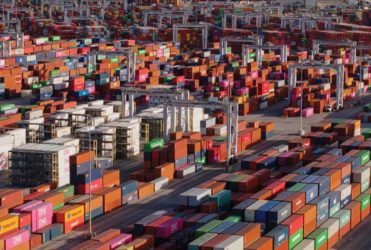 Dozens of mainland Chinese cities, including the financial hub of Shanghai, have been locked down as authorities work towards their “Zero Covid” policy. The lockdown was enforced from the beginning of April and has dealt a heavy economic blow to China.
Dozens of mainland Chinese cities, including the financial hub of Shanghai, have been locked down as authorities work towards their “Zero Covid” policy. The lockdown was enforced from the beginning of April and has dealt a heavy economic blow to China.
The impacts of the lockdown have been far-reaching, and they are:
† After-effects in other ports: Wreaked havoc at Shanghai, the world’s biggest container port, which is now causing problems at other major ports worldwide.
† Export slowdown: Chinese export growth slowed to its weakest pace since June 2020
† Contracted imports: Chinese imports contracted, a sign of weak consumer spending as millions of residents were in lockdown.
† Impact on Big tech: The supply chains of businesses from big tech to consumer goods have been impacted.
† Effects on the global economy: As a “manufacturer to the world,” the disruptions in China weigh on the global economy.
Some Chinese cities, including Shanghai, have lifted Covid restrictions, but experts say that the damage has already been done, and global shipping will suffer well into the summer. The Chinese government is trying to get production back on track. Yet many foreign businesses say they’re still unable to resume operations. South Korean exports, a barometer of worldwide demand, grew by double digits in April. However, shipments to China dropped, suggesting China’s slowdown is a product of its Covid restrictions.
“Disruptions to production and deliveries may adversely impact shipments. The output and delivery components in April’s official PMI data deteriorated to the worst levels since the nationwide lockdown in early 2020.” by the Asia Economists Team.
This will exert even more pressure on global supply chains already reeling from Russia’s invasion of Ukraine and keep inflation running hot.
Inflation across the globe
China’s lockdowns triggered inflation. Consumer price growth is forecast to accelerate. Factory gate inflation will likely remain elevated in April. Apart from this, a “complicated and grave” employment situation will persist. Chinese Premier Li Keqiang instructed all government departments and regions to prioritize measures aimed at helping businesses retain jobs and weather the current difficulties. The government of China is working on stimulus packages to meet an economic growth target of about 5.5% this year. Credit data for April due this week will show whether monetary and fiscal support has had the desired effect of stoking borrowing.
U.S. may see high inflation figures; however, it’s projected to have moderated on both a monthly and annual basis, partly reflecting a dip in gasoline prices that have since picked back up. U.S. measure of prices paid to producers in April is slated for release and is expected to show some moderation in the pace of wholesale inflation. Inflation peaked in March at 8.5%, the highest in four decades. Price pressures are expected to remain elevated. Therefore, Federal Reserve officials will steadily lift borrowing costs in the months ahead.
U.K. gross domestic product data for the first quarter might already hint at stalling growth. Economists forecast a 1% increase in U.K. GDP for the first quarter, which may cover a period with no growth in March. Bank of England says that the situation is turning “starkly sour,” with double-digit inflation likely to crush any growth toward the end of the year. The BOE delivered a fourth consecutive rate increase this month.
Asia
In Malaysian markets, inflation remains tame, but economic slowdown risks remain. Officials in Malaysia are taking steps to bolster economic growth in the region. In India, the Reserve Bank of India hiked the repo rates. After scrutinizing the April inflation data, economists will reassess their policy forecasts.
Europe
Germany’s ZEW gauge of investor expectations was forecast by economists to have dropped further in April from a level that was already the worst since the pandemic erupted in 2020.
Euro-area industrial production for March contracted noticeably.
Inflation reports from the Czech Republic show a new high above 13% for April.
In Russia, economists anticipate inflation may have exceeded 18%. It’s a dramatic surge in the space of just two months, doubling since the invasion of Ukraine. The central bank predicts further price surges. Russia is also reporting bleak trade data pointing to the impact of sanctions on imports and exports.
Latin America
Mexico’s full-month and bi-weekly consumer price data reflects a two-decade high.
With inflation now more than twice the 3% target. It is expected that Banco will raise the key rate to around 8.5%
In Brazil, April’s annual consumer-price reading vaulted past 12%. After raising its key rate to 12.75% on May 4, the central bank signaled that a rate hike is likely for next month.
Argentina’s monthly consumer prices annual pace pushed past 56%. Many local economists see that hitting 60% by year-end.
Peru is battling the fastest inflation in two decades. The central bank is expected to extend a record tightening cycle and raise the key rate to 5%.